Transcript from the podcast “Speak Out Loud: Stories of Strength from the Southern Downs”
SEASON 2: EPISODE 8
GUEST: Helen Lewis, Picot’s Farm
PUBLISHED: 21st March 2022
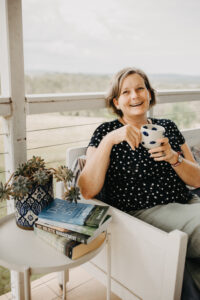
[00:00:00] Helen: If we focus on what we can change ourselves, what we can control and then what we can influence, that’s a far better use of my energy than worrying about the area of concern, which might be out of my control like rainfall. I can’t make it rain. I can’t make it not flood. I can’t do all those things, but I can make a contribution on my place so I’m ready for that. I can either get my business ready for that. I can get my land ready for that as best as I can. It’s never going to be perfect, but at least I feel I’ve, we’ve done as much as we possibly can with what we’ve got and we’ve made some early decisions.
[00:00:47] Kathryn: Today’s guest is Helen Lewis who shares some valuable insights and some tools to help you manage tough times. Helen is a primary producer from Picot’s Farm near Warwick on the Southern Downs, and she has a keen interest in educating communities about chosen change and unchosen change as well as decision-making for your farm, your business, your family, or your personal life that’s based on your values and your longer term vision. Helen also shares some information about the Outback Way Project which highlights the benefits of connections within and between communities and the power of collaboration.
Welcome to the podcast, Helen. Can you share with our listeners what your connection is with the Southern Downs?
[00:01:40] Helen: Well, thank you. It’s pleasure to be here, Kathryn really uh, It’s it’s wonderful the series you’re putting together. So thank you for including me in that. My connection with the Southern Downs probably starts when I was about nine months old. We moved from Brisbane to Warwick. And interestingly, my parents had purchased Hillside, which was Archdeacon Glennie’s old home sandstone home on top of the hill, in Glennie Heights. And so I grew up in this lovely old rambling sandstone home, and, uh, which had a deep connection with the area. The rectory of St. Mark’s church, is actually the kitchen from Hillside. And so I had 30 wonderful years living and you know, enjoying being at Hillside, in amongst being at boarding school and university and everything, but it was always home, which was lovely. So my connection has probably been in and out I guess of the Southern Downs with education and work. But eventually came home in 2003 and have been here since.
[00:02:40] Kathryn: The Southern Downs Region has been on a recovery journey following drought and then bush fires in 2019 and 2020. And more recently, the region has actually experienced some pretty significant rain and flooding. So we’ve had it all as well as the pandemic. What are some of the challenges that people who are working on the land have needed to navigate throughout these times?
[00:03:04] Helen: It has been a period of a roller coaster of events, hasn’t it? And there’s a lot of emotional impact that that has on people, uh, as well as physical, and obviously in landscape as well. The challenges are clear I mean, we know that drought is, is low rainfall and it’s just you know landscape dries out. We know the damage fires do. And we also know the impact of floods. But I guess, you know, it’s interesting that bush fires and floods are deemed to be a natural disaster because they are, you know, there there’s a start and finish. They come and they go, quite quickly, probably within days. A drought though lasts for however long it lasts and we don’t know how long that’s going to be. And so it’s the unending. It’s the continuous dry time. That’s the unnerving bit in drought. These events are actually unchosen and they create unchosen change for us. So there’s the process of unchosen change and where there’s steps and stages that we go through, regardless of how big the unchosen change is or how small and those steps include denial as the first one. So we put our head in the sand, it’s not happening, we don’t want a bar of it. We’ll just put our head in the sand. It’ll go away. Soon enough we understand that that’s not gonna satisfy with it’s still here. It’s still in our face. So then we start blaming. We start actually blaming others for it. And government’s not doing enough, or, you know, what happened, or whose fault is it? So we want to blame someone. Then we actually probably come to the acceptance. Okay. It’s here. Righto. Acceptance is just acknowledging that Right, we have a problem we’ve got dry times or, we’ve, you know, it’s happened. Um, and then from acceptance, if we can move through acceptance we get to resolution, which is actually, Okay what am I going to do about that. I better do something. I better make a decision about what I’m going to do differently, or how am I going to manage this? And then there’s exploration. Once we’ve hit that resolution of, Okay, I’ve got to do something, it’s up to me, we then start exploring, which is where we see all our options and ideas. And we actually then have chosen change. We move into the chosen change process. We’ve chosen change. There’s a relief because we’ve made a decision to do something and then there’s that excitement of, Okay, well, how can I make that work? And where can I put it? And let’s make this happen, but then we actually hit self-doubt. Sometimes we get caught on self doubt. And that’s where we can get stuck. And that’s where it’s really important to have supportive community around you because you need that support of the like-minded, your own tribe to actually help you and encourage you to keep on the path of of the change you’ve chosen. And then, from that you then go into resolution again. The resolution is I’m okay and I can keep going. And then you probably make another chosen change, you know, you kind of move through them. So it’s a really important that people understand those, but with all these events that have happened, natural, like, you know, with drought and bush fires and floods, it is the unchosen change and being aware of blaming. We can keep blaming for a very long time. And that’s not helpful for people to get stuck in because it’s negative and it’s very tiring. And also there’s no answers because it’s not necessarily anyone’s fault. So with that, I guess it’s comes then to the need for being part of local groups like the Landcare Group or farmer groups. We have a lovely farmer group of five other families. We meet every three months to work on our businesses. We discuss things. We, we challenge each other. We ask questions of each other. The kids have a lovely time together. Like it’s just a really great support. And during the dry times we certainly lent on each other heavily to discuss what was going well and what was good and how things happen. We just really tried to shift our focus into what was working but then also acknowledge what wasn’t, then you’ve got this group of people who can help you with ideas on, or what do you do to fix that or make it move, you know, how can we help each other? So Yeah, look, the challenges are endless. It’s about the commercial viability in a changing climate, really. I mean, if we don’t actually improve our landscape function, we’re going to have more droughts and more floods, and they’re going to be more severe. So we do have a responsibility to improve our landscape function. I mean, I was so excited that the recent flood we had a few months ago. There was silt on our flat so we have water coming through from Greymare Creek and it dropped a load of silt um on the first paddock. By the time it was crossing the road, it was only like maybe five to 10 centimeters deep. It was crystal clear. I could see the bitumen through it. But that’s exciting. That’s exciting. I know that our landscape is filtering that water. We’re getting the bonus of someone else’s silt I guess, but at the same time, we are sending that water off our place crystal clear. And it was completely saturated, but it wasn’t running fast. It was running slow, and it was clear.
[00:08:21] Kathryn: So some land management in action there.
[00:08:23] Helen: Absolutely. That’s testament to the work that we’ve been putting in with our planned grazing and really improving our ability for soil and our grass to filter water. It is our responsibility as farmers to actually get our landscape ready for rain and ready for drought. I want my landscape respond, whether it’s five mills or 50 mills. I want us to have enough ground cover so that five mils is useful and so is 50. We need to have landscapes that can function with very little rain plus also be able to absorb and hold lots of rain at once. That’s a great landscape. That’s a big compost bin and, you know, in the soil, which is what we’re aiming for. And if we’ve got that, then we’re holding the water in our soil and that’s the best place to hold moisture. It brings everything alive. It enables the microbes, the fungus, the bacterias everything to function. It’s about understanding that.
[00:09:17] Kathryn: I’m really interested in the unchosen / chosen framework that you spoke about Helen. It sounds like when you can accept that there are certain things you can’t control around the weather and those events like bush fires and floods, there’s only so much we can control around that, but you’re making that resolution and you’re exploring your options, even when things are going fine, when things aren’t tough, when those natural disasters aren’t occurring. And that’s a really good preparation for those times when drought might, you know, the dry times might come or, or the flood might come. And so holding that soil together and the water management, the land management, all the things there.
[00:10:06] Helen: Yeah, that’s right. And it’s also about really being very clear about your circle of influence and circle of concern. In the drought, Ian and I really talk about what can we do now? What are we a hundred percent in control of? Well, we’re in a hundred percent in control of our landscape. What’s going on here, whether we have animals or not. We can choose, we’ve got lots of choices to make lots of decisions to make, and we are a hundred percent in control of what we’re choosing to do. And when we actually really focus on ourselves and what we can control, we then help to break down what we can control and then that helps what we can influence. So our circle of influence grows and then also diminishes our circle of concern. So we could have lots of concerns about lots of things, but if we, uh, if we focus on what we can change ourselves, what we can control and then what we can influence, that’s a far better use of my energy than worrying about the area of concern, which might be out of my control like rainfall. I can’t make it rain. I can’t make it not flood. I can’t do all those things, but I can make a contribution on my place so I’m ready for that. I can either get my business ready for that. I can get my land ready for that as best as I can. It’s never going to be perfect, but at least I feel I’ve, we’ve done as much as we possibly can with what we’ve got and we’ve made some early decisions. But also we’ve sat down and said, Righto, what’s our drought trigger point? So in this good season, if we hadn’t have had the rain in, by the end of February that we’ve had this year, we would have started to de-stock. Now we’ve had three good seasons in a row. We have so much feed. We know we’ve got this year, we’re sorted, we know we’ve got standing hay for the winter. We know we’ve got enough feed to carry our animals all the way through and we could probably take on more animals. But then again, if we don’t have rain by January, February next year, because March is too late for us to grow anything, so we need to have the summer rain by the end of January, early, mid February, for us to know that we’ve then got enough growth time for us to have winter feed, we then start to reduce numbers. It’s just early decisions. And so we completely destocked in the drought and we had no stock here for 12 months. And that was, I mean, that was an excellent decision because we actually then were able to do other things in the drought. We weren’t doing the day to day feeding or anything. And how do you, how long does that go on for? You don’t know the end point. And so that whole notion of hanging onto something and continually putting money into it without knowing the end point, we don’t have that risk profile. We don’t, some people do and that’s that’s okay. But we don’t. So it’s about us knowing our risk level. We make that early decision and we destock, but saying that, so we had brown ground cover everywhere on this place. It wasn’t very thick at all, but when it rained, four weeks, we had knee-high grass. We were back in business four weeks.
[00:13:19] Kathryn: It was really amazing wasn’t it to see it just come up like that.
[00:13:23] Helen: Absolutely. So it’s about understanding what decisions am I going to make that will help me go into drought later. It looks like a depressing landscape, but then at the same time, it’s got its own function. And I was just thinking what what’s nature doing now, when I look out the window, when it’s dry and you go, what’s going on under there, something’s going on under there, like, and we had soil carbon for the microbes to eat. They were eating the pantry stores, which is our soil carbon. Then they can be brought back to life with rain, you know, and that’s, that’s extraordinary, you know, nature is so forgiving and just always happening. So I feel that it’s early decisions. It’s about understanding your own trigger points. So you need to make a plan and you need to stick to it. And understand how long are you prepared to feed Whereabouts are you going to do that on your property? Are you going to do it the same place every time? Why not move it around and actually put some animal impact around the place and then when it does recover, you’ll actually get some recovery. It won’t be another scalded place a spot for another 10 years, you know? So people move their feeder around into different paddocks, even onto bare patches and give that a bit of joojup with all the hoof action and every day just move the feeder. Then you’re actually preparing your soil for rain. And what are you going to feed them? Where are you going to get it from? How much is it going to cost you? So what are you doing? Why are you doing it? It’s all connected back to our values and how we want to live our life.
[00:14:45] Kathryn: And I wanted to circle back to something you mentioned a little while ago, Helen, about creating a network of farmers around you. And that it’s, it’s a really great way to support each other, to share information, to share ideas and inspiration as well about how to manage whatever happens to be going on at that time. And I just wanted to check in with you about that risk there is when we get together with groups of people. And I know particularly when the landscape was very dry and it was very brown, often the conversation would be around the negative. So how do you, within a network like that or in a, circle, a social circle, keep things positive and constructive?
[00:15:40] Helen: And I think that’s where we focus on what we can do and so if people are whingeing about feeding and it’s taking its toll, sell your animals. Get rid of them while you still can and while they’re worth something like, it’s actually about why do we make a rod for our own back? No one’s making you keep your animals. They are a saleable asset. Choose. Otherwise don’t complain. It’s actually about, it’s about the choices we make. We’ve got to actually be comfortable with those choices. If you know, if you’re comfortable feeding, great, well, that’s going to be a good story for you, isn’t it? But if it’s not, well, maybe there’s something wrong with that decision. Maybe you actually selling is a better decision for you because you are pushing against your own risk. You are pushing against your own values. And it’s in the face of your values and how you want to live your life and so sell. Or find agistment somewhere. So I feel that really being very, honest with yourself when you start hearing yourself talking in those groups, when you are in the middle of a drought, what are you whingeing about? What can you do about it again, circle of control, influence, concern? What can you do about that? Is it in your power to do something about that?
[00:16:58] Kathryn: That’s probably a really good segue into exploring this values piece a little bit more Helen, which you also mentioned a couple of minutes ago. And one of the roles that you have apart from farming is educating people around values-based decision-making and holistic management. Could you share with our listeners a little bit more about those approaches and how they might be able to help people in tough times and with some of these tough decisions like destocking, keeping stock, feeding stock?
[00:17:31] Helen: That’s right. So I guess with our values-based decision-making, if we’re clear about how we want to live our life and what really matters to us, and then also talk about the attributes. When our land is at its best, when we’re at our best, when our community is at its best, what are the attributes? If people write those down, that becomes their life context, Uh, which allows them to use that as a reference point. And if we keep updating that as we grow and evolve as people, and you know, we try and do ours once a year and just to check in to make sure it’s still current, that means if we’re using that reference piece for our decision-making and in our decision-making, we’re just checking that every decision we make is good for us as people, it’s good for our environment and it’s good for our finances and wider economy. So we’re trying to actually ensure that we’ve thought about the impact that we’re having, the ripple effect that every decision makes, because you know, we don’t make decisions in isolation. It’s like a pebble in the pond. It causes a ripple. And it goes off farm too. You know, we need to be really conscious that it ripples into the community with the choices we make. Our decision making is, is based on our context of our values and what we want for the future. It’s very grounding. So it’s not Joe Bloggs down the road and what their opinion is. It’s not all the noise from the media. It’s not all the pamphlets from the trade show or the ag show that you go to and you don’t know what to choose and you, so you just choose everything. It allows us a sifting process of all that noise and all those pamphlets and those opinions and we can actually check it check to see if it actually fits our values. And if it does great, if it doesn’t it’s out. And so we make that decision, which is very good for early decision-making. It means that we’re making decisions that are true to ourselves. We’re backing ourselves and it allows us to then, create those sorts of trigger points and policies, I guess, for our farm and our management so that we can be as proactive as possible.
[00:19:36] Kathryn: Would you be able to give us an example of values decision-making in action?
[00:19:41] Helen: I guess one of them was in relation to the feeding. Our values include things like self-sufficient, we want to make a difference. We want to have a really nurturing environment. We also want to be having a highly functional landscape, you know, we want to be proactive. We want to be positive, all these things. And if we run the ideas of feeding or destocking, towards our values, then destocking came up trumps because it actually enabled us to maintain togetherness. We’re looking after our land because we’ve actually destocked, for a short period of time, really in the scheme of things and also just the financial one was a big one because we went Well, we don’t know how long for, and we’re just not prepared to spend that money feeding animals. If we can grow more grass, and if we can maintain that grass because of management, then we can go into drought later and we can come out sooner, even if it means destocking in the meantime. And our next plan for our drought will be probably some agistment somewhere because we now are part of a process where we’re putting our animals through to to other producers who are value adding and selling boxed beef into Brisbane. We’re supplying them with clean meat, into their clean supply chain, which absolutely ticks our boxes, compared to selling it onto the open market. Just knowing that we are being responsible, you know, when we are regenerative ag, and we are trying to produce a clean product and our nutrient integrity is intact, then it’s our responsibility to make sure that that nutrient integrity ends up, being maintained through the whole supply chain um, and that really sits well with us because that gives our product complete integrity. It also is completely in line with our values and that those are the decisions that we’ve moved, that we’ve checked towards our decision-making as well. So yeah, it gives us focus.
[00:21:30] Kathryn: And it sounds like that’s a way of enabling your values to catch one of those ripples that goes out to the wider community so that at the other end, the consumer is enjoying the benefits of those values that you started the process with.
[00:21:49] Helen: Yeah. Yeah. That’s right. That’s really important that we maintain that transparency and the value of the product all the way through for the consumer.
[00:21:57] Kathryn: So many wonderful ideas that you’ve shared with us already, Helen, but I’m wondering if you could choose one top tip to give somebody for managing tough times, whether it’s weather conditions or something else who’s living off the land, what would that be?
[00:22:15] Helen: It is decision-making. I mean, when we need to also understand the tools and the toolbox. So sorry. The one tip might be very big one tip. But yeah, look, the understanding how nature functions. So, planning grazing, moving animals. If we’re set stocking, we’re allowing animals, just to graze everywhere, anytime, for as long as they like. We’re just eating species by species, plant by plant. Like it’s not going to be helpful in a dry time. It’s just going to cause more drought. If you’re planning your grazing and allowing adequate recovery of your grasses, you will have feed for longer. There’s just so many people who’ve had success with that. And mobbing animals up putting them together and then moving them around your paddocks. And then not coming back to that first paddock till it’s fully recovered in a summer will mean that you are growing grass for winter. And that means that you can keep in business. So understanding how to manage your animals and even in cropping, explore the cover cropping. Explore direct drilling into to land. Why plough when you’re all you’re doing is you’re breaking the, microbes, you’re breaking up the soil profile and, all the things that you’re relying on to grow a crop, you’re actually destroying with the plough and then all your top soil blows away. It’s not about jumping off the cliff and going all of the farm all at once to do the transition into some cover cropping or some direct drilling into pasture. Just try it and try it for three years, but just keep persevering because yeah, this stuff, is you transitioning out from something that’s very input heavy, which costs a lot of money to grow, to try to transition to something that’s going to cost you far less. It’s all very well to be best in show and the best yield, but how much does it cost? And that’s a big point. And so I just feel that people need to be really aware of the costs and input costs are only propping up what should already be in the soil and the soil should be functioning for us. And the more diversity we have, the greater the resilience of the plant we’re trying to grow because of all the predator, prey relationship in play. In the toolbox we have technology, time and living organisms. Technology. We love technology because it’s quick, it’s a gadget, it’s a how to and humans are linear. We love it. But we have to keep in mind with technology, if it’s destroying soil structure, if it’s breaking down soil biology, if it’s baring ground and if it’s not solving the root cause of the problem, then why are we using it? Because that’s taking us backwards. Living organisms are all the natural biology. It’s the compost teas. it’s the microbes that people put on. It’s all this living inputs. That’s where we’re better off because in the technology bucket, in our toolbox, that’s the chemical fertilizer. It’s the chemical fungicide. It’s the chemical pesticides that’s, that’s all technology cause it’s manmade. If they really feel the need to put something on, they can transition to natural inputs which are living organisms. And in the middle is time, which is actually about understanding the time on the land for grazing, the time for plants to recover, obviously we have times for crops to grow. We have time for harvest. Time is something that we manage. It’s a tool. We can use the tool of time for healing, and growing and harvesting and eating and, and enjoying. So it’s uh, actually a really important one cause time in nature is huge. And droughts are really a time for nature to reset like frost. So it’s an event in nature. And so we need to acknowledge that as well.
[00:26:08] Kathryn: That toolbox sounds like it would be useful for every individual human being as well.
[00:26:15] Helen: So absolutely. It’s a universal toolbox that we need to just check in with and say, well, okay, what tool am I choosing to use here? And technology’s everywhere, but, um, we just need to be mindful about the application of that technology. Just because we can doesn’t mean we should.
[00:26:31] Kathryn: The other part of technology, which I’m thinking about as you’re speaking, Helen, is how we access information. And there are some wonderful opportunities these days to educate ourselves, to access information and education using technology.
[00:26:48] Helen: And that’s where technology comes into its own. And we’re doing farming in a completely different era now with technology. And if we can use it well, there’s Ted talks, there’s Google, there’s Zoom calls you know, you can go to a course every day on Zoom, you know, like there’s just so much out there. But even local land care field days are enormously beneficial and they’re tactile, they’re physical, they’re people, you know, face to face.
[00:27:11] Kathryn: I’d like to change focus for a few minutes, Helen, and have a bit of a chat about one of your other roles that you have in our wider community, even beyond the Southern Downs, which is with the Outback Way. Could you tell us a little bit about your work with the Outback Way and how that might be impacting communities that it’s serving directly, but also indirectly and more broadly across Australia.
[00:27:37] Helen: Sure thanks. So I’m the General Manager for the Outback Highway Development Council and we for the last 20 years have been, well, I think it’s 25 years now have been uh, advocating and lobbying for sealing the road between Laverton in Western Australia through to Winton in Queensland. So it’s a transnational link connecting the east to the west, um, right through past Uluru. And we have secured over $400 million and road is being sealed now. With the final use of that 400 million, we’ll only have 900 kilometers to seal and we’re hoping to have this done by 27, 28. That’s the plan and what it does for the community. So we have 13 indigenous communities along this route that rely on the Outback Way roads. And it’s connected by four or five different roads. So we’ve got the Kennedy Development Road. We’ve got the Donohue Highway. We’ve got the Plenty Highway. And then the Stuart Highway around Alice Springs right down to Yulara. Then it hits onto the Docker River or Tjukaruru Road. And then we hit the Great Central Road in Western Australia. So they’re the roads that make up the Outback Way. And um, along those roads, we’ve got very cultural communities right the way across. And the impact for the communities is it sounds Irish, but if you can leave a place, you will stay. And that really is magnified when we’re talking about health and educational service delivery. When teachers and nurses and doctors can leave a place, um, 24 7, regardless of weather, regardless of any time day or night. they will stay. longer. And so as a result of that, then the trust, continuity of service delivery and health delivery improves and is consistent which means that there is far better health outcomes and far better education outcomes. Um, and that trust is really, really important particularly indigenous communities. And so the sealing of the road is more than just, let’s just put some tar down and like make it a tourism route. That’s lovely. And that’s obviously going to be fantastic for Australia and you will actually be able to zigzag the nation, which is great. And so gray nomads won’t have to go around in circles anymore. Um, they’ll actually be able to come across. And so looking forward to that, that’s, that’s awesome. But really importantly, even just the basket of goods. So all the national basket of goods, we worked it out that in Warburton, which is in the Western deserts, WA their basket of goods is 136% more expensive and it’s tinned food. It’s not fresh food. It’s tinned and frozen food. If we can seal the road where it means fresh fruit and veggies and fresh meat can reach this central Australia and these isolated communities, again, their health and their wellbeing will be enhanced significantly with just simply better quality food. And so that in itself, you know, really does change things for these communities. In addition to that, there’s obviously employment opportunities and with tourists, there’s a huge amount of opportunity for indigenous tourism activities, but also just local remote communities. Boulia is just buzzing at the moment. They’ve just redone their Min Min Centre Encounter. And so they’re just loving the connection the Outback Way gives them to a whole new set of tourists from central Australia. And clearly on a bigger notion the Outback Way will really enable enormous amounts of growth in mining sector in Western Australia. And it’s the mines that are mining the minerals and resources we want for our gadgets. So these are the mines that have got the rural resources, the copper, all these things that are critical for taking us forward into the battery technology, uh, and then also, then we’ve got the national freight story. You know, just recently the uh, Stuart Highway was closed. The railway was closed. The Adelaide Darwin railway was closed. The Nullarbor railway was closed. And so if we had a third route across Australia, we’ve got then a freight option as well. Another freight option which is really critical. Last year the Nullarbor fires closed the Nullarbor for a while. And again, if we’d had the sealed route across Australia through the Outback Way, again we’d be able to transport product east-west. There’s a lot of horticulture in Central Australia. There’s a lot of cattle, and improved animal welfare, improved savings for freight companies and trucking and pastoralists and actually making viability more realistic out there and adding value to their marketing options as well. And then of course, the tourism as well. The Outback Highway Development Council is put together with, um, the five shires across the route. So Winton, Boulia, Alice Springs, Ngaanyatjarraku and Laverton. Uh, and this project is then multilayered. So we work with Indigenous Land Councils. We work with the state and territory governments, the federal governments, we’ve got three tiers of government involved. We’ve got Indigenous community, we’ve got tourism, we’ve got freight, we’ve got logistics and we’ve got mining companies all involved in our organisation. We’ve you know, 40 companies and organisations that we’re collaborating with. And the value of this project but it came from the ground up. And I was out there 2017 with a media famille. And when they knew that we were on the Outback Way, we got hugs all around. They just can’t wait. The Indigenous communities are crying out for this infrastructure because it means people will stop. They’ll spend some money. They can have enterprises, they can actually make some money. They can make some economic development choices and it does comes back to this decision-making, you know, when you’ve only got one choice of toothpaste on the shelf to choose from, you’re not even making a decision. And so we’ve got this situation where we’ve got these people in these communities who aren’t even empowered to choose what food they eat, what toothpaste they use. I mean, for someone in urban Australia, well, that’s we just take it for granted. So how do you empower yourself if you’re not even making that basic day-to-day decision there’s no choice. And I believe the sealed road will enable that choice because there will then be the option for other products to come in and they’ll suddenly be able to choose between two toothpastes, two different brands, maybe five different brands. That’s exciting because it suddenly means empowerment. That starts the whole notion of actually being able to be in control of their own life.
[00:34:11] Kathryn: There are some really terrific themes that are coming out of the Outback Way that you’ve described Helen. Choices on all different levels right from being able to choose something different at the supermarket. Perhaps even a choice of supermarkets but also a choice of roads for tourists who might want to do some travel around Australia. So those logistical choices as well for transport. So if there is a problem with one access road there may be this other option as well.
[00:34:46] Helen: Yep. And I guess, the big thing too is the project is really about, collaboration and it’s come from the grassroots. It’s come from the shires and the ground up, and there’s no one out there that doesn’t want this to happen. And that’s really unique for such a big scale national project. It’s the only one of its kind that doesn’t have contention attached to it.
[00:35:09] Kathryn: So you’re seeing this aspect of collaboration, lots of opportunity for connection as well in the example of the Outback Way and bringing that back to our local Southern Downs Region, it brings to mind the Food Map. Could you tell us a little bit about the Food Map because that’s very much about connection and collaboration and choice and empowerment as well.
[00:35:34] Helen: So in 2019, Sarah Duden and I completed the Food Map. And that’s basically a, um, a list of all the producers in the region that are direct marketing to consumers, so the consumer can actually buy direct from the farmer and also any cafes that are actually selling and putting local food on their menus and or value adding local foods. So, you know, Jamworks and their berries and then there’s variety of producers that are growing produce in the Southern Downs, processing it in the Southern Downs, and then it’s available for sale. So locals can buy local very easily when they get hold of the Food Map and then start buying direct from farmers.
[00:36:18] Kathryn: That’s terrific. We’ve covered lots and lots of topics on our episode today, Helen. Is there anything else that you’d like to share about holistic management or values-based decision-making or anything else that maybe we have covered, but we’ve missed or something that we’ve missed altogether?
[00:36:37] Helen: Just a closing thought and that is I think if we adopt the headspace that we’re either winning or learning, I think that’s really powerful. It’s either working for us, or what am I learning from this? If we’re not comfortable, if it’s not going so well, okay, what am I learning? What can I learn from this? And what can I do differently? It’s a really positive space to be in. And also it’s a really important because with that learning notion, it means that we have to be monitoring. We need to be checking in and we need to know what we want, to know that we’re not going so well. What, what do we need to find or seek out to help us take that next step. It really puts us in a much more proactive state of mind.
[00:37:24] Kathryn: Winning or learning. Sounds like a really fabulous motto for us to take on board and if people are wanting to learn a little bit more about this values-based decision-making Helen, how can they find out about that?
[00:37:39] Helen: Sure so my values-based decision-making contact is Decision Design Hub, so they can go to our, my website and then there’s a personal button and people can actually do the online course. And for agriculture, there’s an agricultural button, and then boards and organisations can also click through and I’m looking to help organisations and councils and community groups, actually uh, put together values-based decision-making for their own organisations, because it’s very good at collaborating. The Outback Way uses holistic decision-making within our decision-making process as well and it’s clearly helping us with our collaboration. And then for what we’re doing on farm, Picot’s Farm, and they can source our beef and also the workshops we host, through picotsfarm dot com dot au and Picot’s is P I C O T S farm. We get pickets, but it’s Picot’s from Harry Picot, the fellow who, uh, who built the buildings and did some work down here. We very happy to talk to anyone who’s interested in any of those things. And if they’re interested in the Outback Way and want to go on a trip it’s outbackway dot org dot AU.
[00:38:48] Kathryn: Thanks for listening to the Speak Out Loud Stories of Strength podcast with me, Kathryn Walton. I hope this episode inspires you to get involved and to get connected with your community. You can find the transcript and any links mentioned in this episode, in the show notes and please share the podcast with your friends.
We acknowledge and pay respect to the past, present and future Traditional Custodians and Elders of this nation and the continuation of cultural, spiritual, and educational practices of Aboriginal and Torres Strait Islander peoples. Series Two of this podcast has been jointly funded under the Commonwealth and State Disaster Recovery Funding Arrangements 2018.

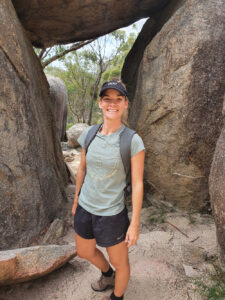

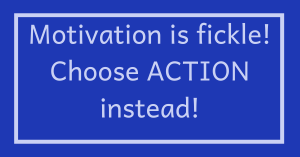
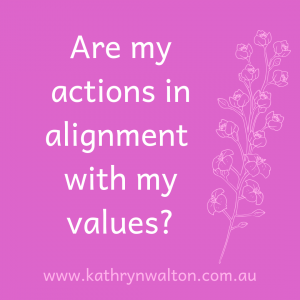
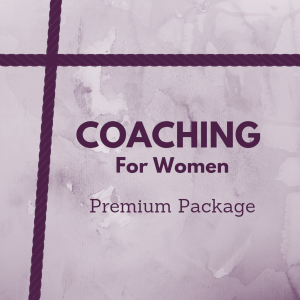
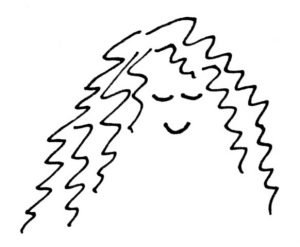
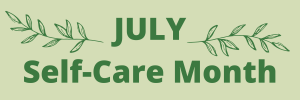
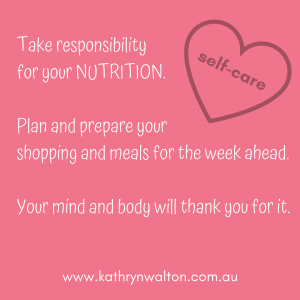
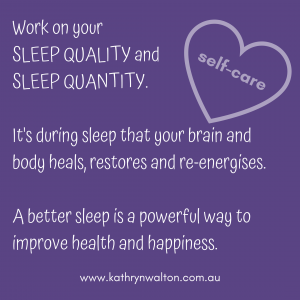
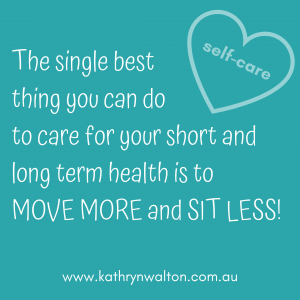
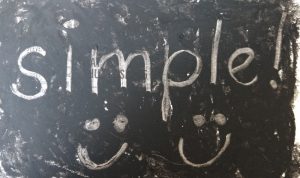
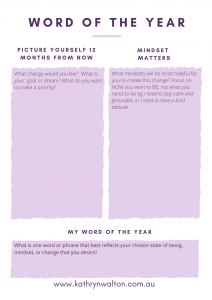
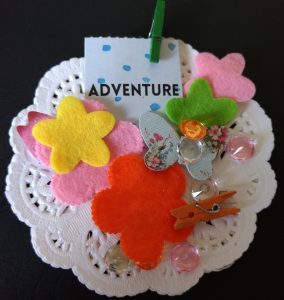

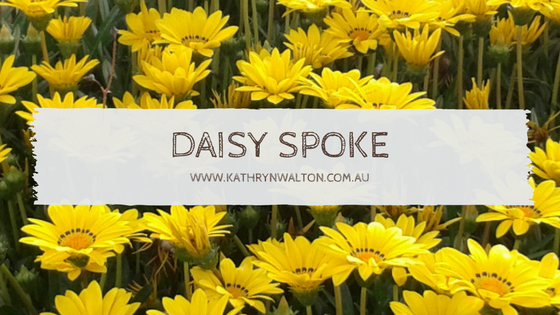
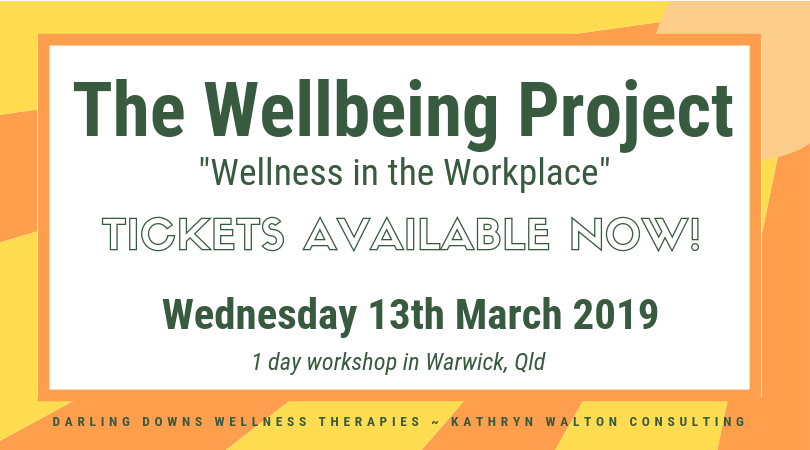

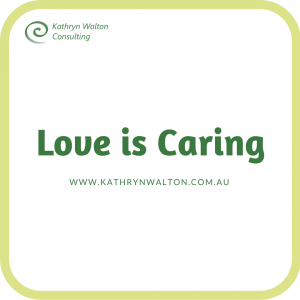
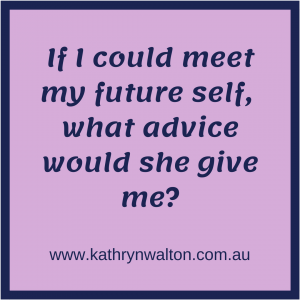
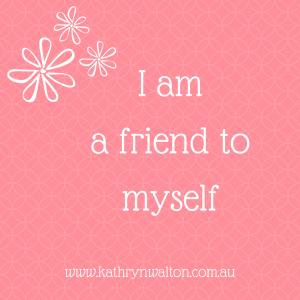 The way we think is closely related to the way we have been socialised when were younger, with the added layer of personality thrown in. So it’s no surprise that women often share certain beliefs, assumptions and thinking patterns related to self-care – it’s selfish to do something for myself; people will think I’m selfish / not coping; time and money should be spent on something or someone else who needs it more than me; I don’t have enough time or energy; I should just soldier on like everyone else does …..
The way we think is closely related to the way we have been socialised when were younger, with the added layer of personality thrown in. So it’s no surprise that women often share certain beliefs, assumptions and thinking patterns related to self-care – it’s selfish to do something for myself; people will think I’m selfish / not coping; time and money should be spent on something or someone else who needs it more than me; I don’t have enough time or energy; I should just soldier on like everyone else does …..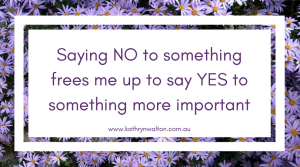

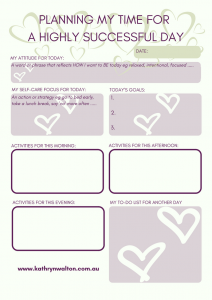


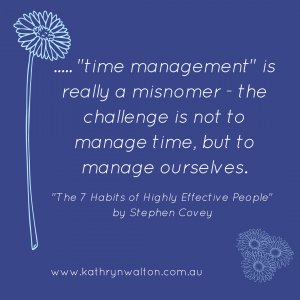
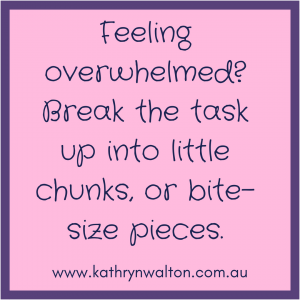
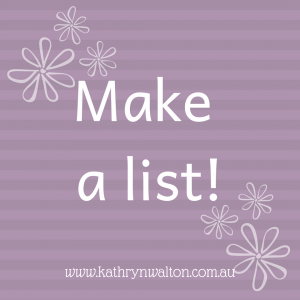
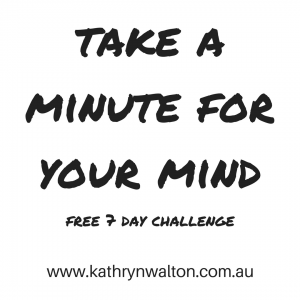

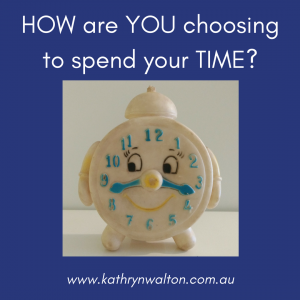
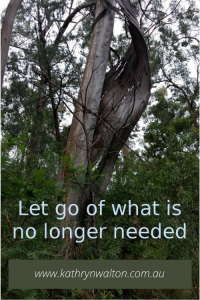

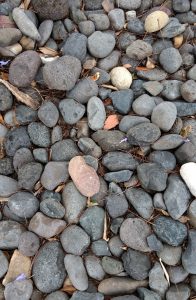 So first of all, make sure you GET THE BIG ROCKS IN YOUR LIFE FIRST. They are your priorities so take steps to make sure you allow plenty of time and energy for them. Next put in your medium-sized rocks. Your small rocks go in after that and will be able to settle into the spaces between the bigger rocks. You can be more flexible with how they fit into your life. Next comes the sand. These things will be able to flow into the spaces that you have left. If there isn’t time and energy for them right now, that doesn’t matter. When things settle, they’ll have a place in your bucket once again.
So first of all, make sure you GET THE BIG ROCKS IN YOUR LIFE FIRST. They are your priorities so take steps to make sure you allow plenty of time and energy for them. Next put in your medium-sized rocks. Your small rocks go in after that and will be able to settle into the spaces between the bigger rocks. You can be more flexible with how they fit into your life. Next comes the sand. These things will be able to flow into the spaces that you have left. If there isn’t time and energy for them right now, that doesn’t matter. When things settle, they’ll have a place in your bucket once again.